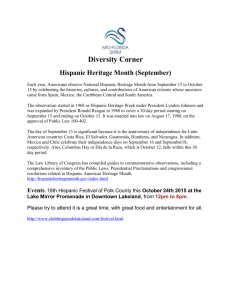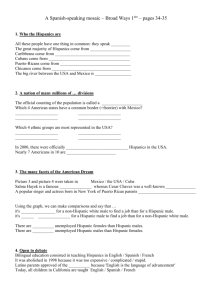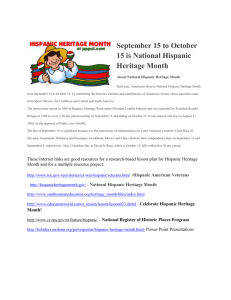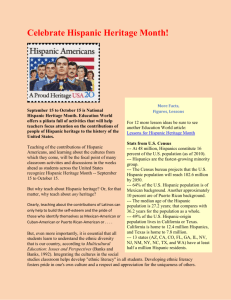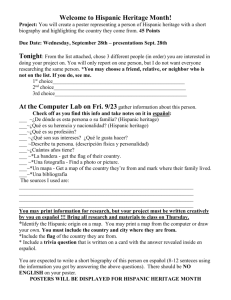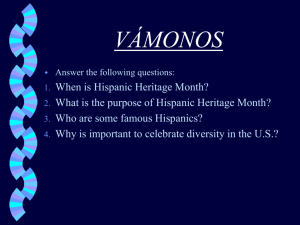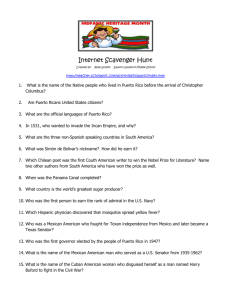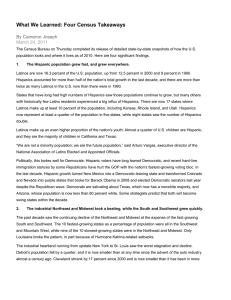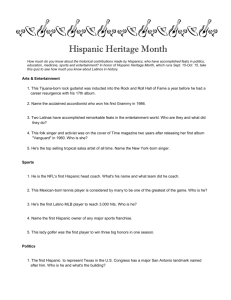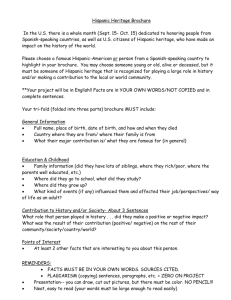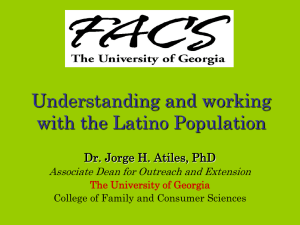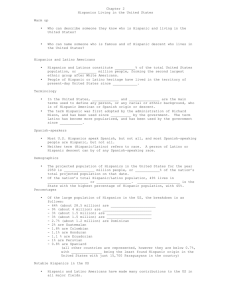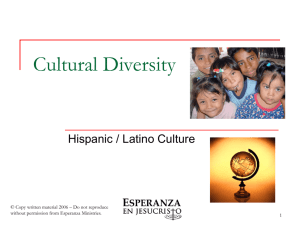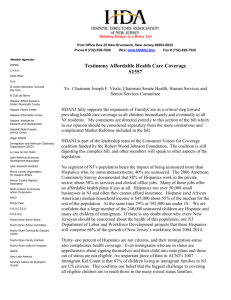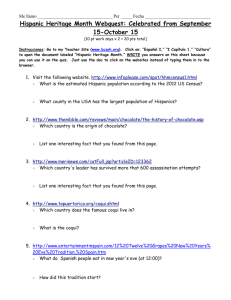Document
advertisement
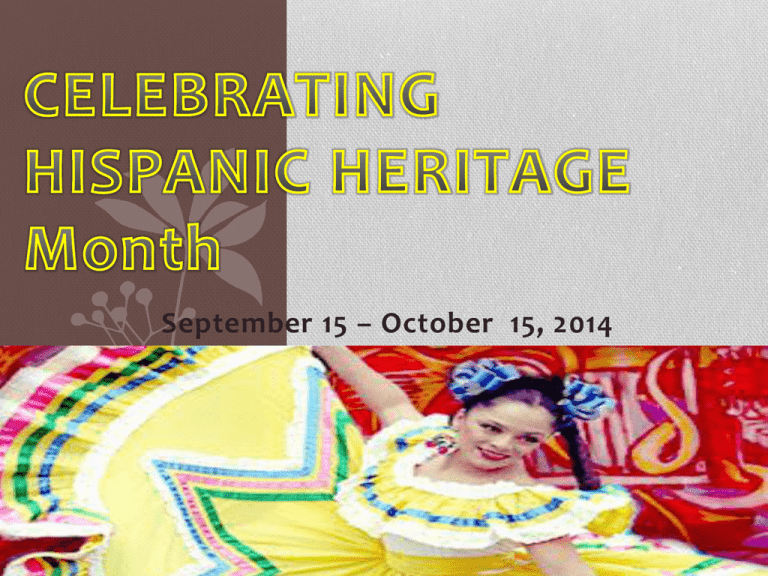
September 15 – October 15, 2014 Hispanic Heritage Month Each year, Americans observe Hispanic Heritage Month from September 15 to October 15, by celebrating the rich histories, cultures, and contributions of Hispanics to our local community, our nation, and the world. Hispanic Heritage Month Sept. 15 was chosen as the starting point for the celebration because it is the anniversary of independence of five Latin American countries: Costa Rica, El Salvador, Guatemala, Honduras and Nicaragua. In addition, Mexico and Chile celebrate their independence days on Sept. 16 and Sept. 18, respectively. Hispanic Heritage Month History The observation started in 1968 as Hispanic Heritage Week under President Lyndon B. Johnson and was expanded by President Ronald Reagan in 1988 to cover a 30-day period starting on September 15 and ending on October 15. It was enacted into law on August 17, 1988. In Florida, State Statute 1003.42, passed in 1998, requires the study of “the contributions of Hispanic to United States history.” Hispanic Origins Many Hispanics trace their roots to the cultures of the indigenous peoples of the Americas, including the Arawaks (Puerto Rico), the Aztecs (Mexico), the Incas (South America), the Maya (Central America), and the Tainos (in Cuba, Puerto Rico and other places). Other Hispanics trace their roots to the Spanish explorers who set out to find riches and trade with the Indies. Still, other Hispanics trace their ancestry to the Africans who were brought as slaves to the New World. Hispanics in the United States • According to the U.S. Census Bureau, 53 million people or 17% of the population of the United States are of Hispanic or Latino origin. • Hispanics are the nation's largest ethnic or racial minority.

